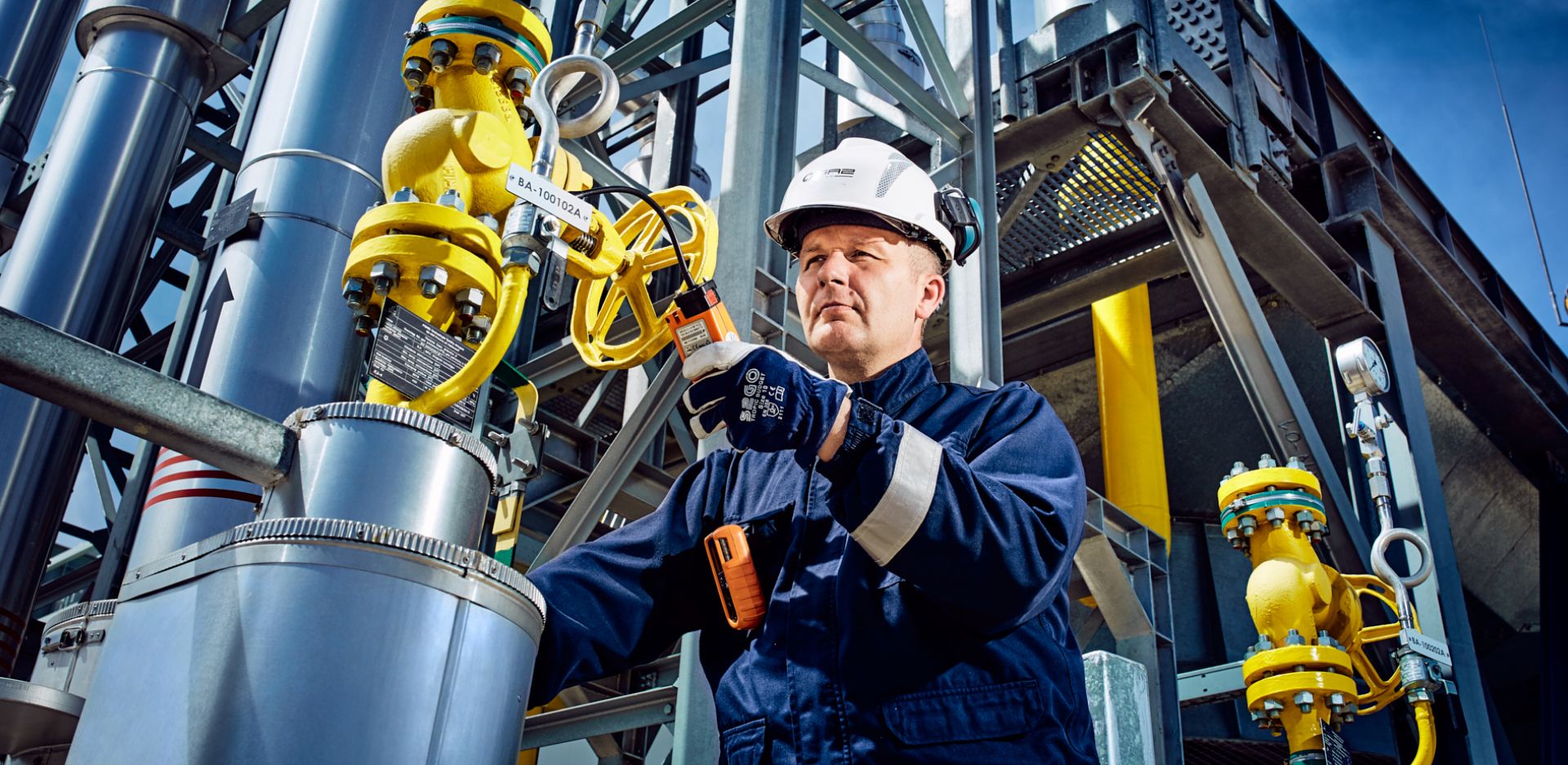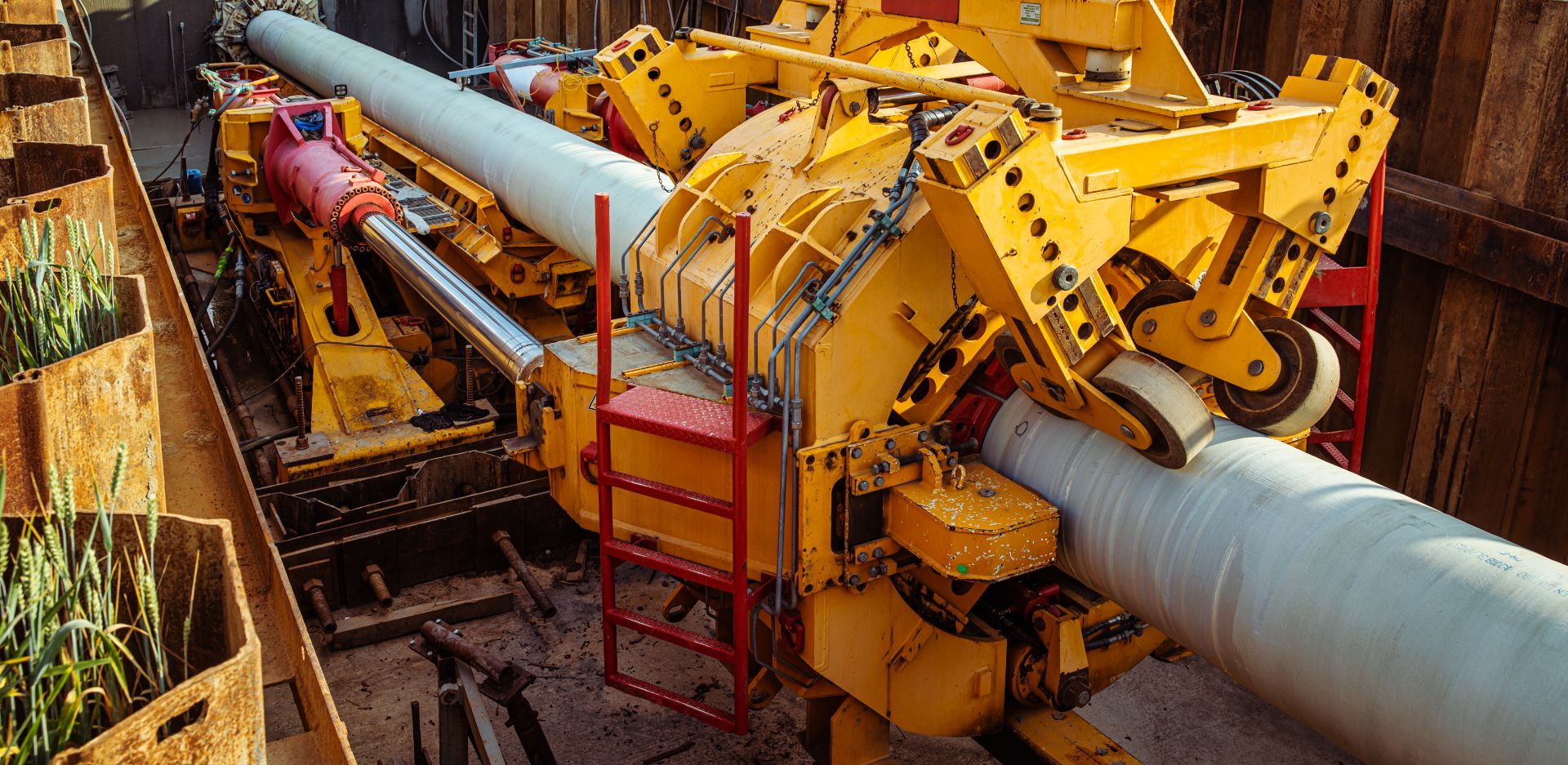- the Act on the defence of the homeland of 11 March 2022,
- the Act on the protection of persons and property of 22 August 1997,
- the Act on the crisis management of 26 April 2007,
- The Act on the protection of shipping and seaports of 4 September 2008,
- the Act on the special powers of the minister responsible for state assets and their exercise in certain companies or corporate groups operating in the electricity, oil and gas fuel sectors of 18 March 2020
- the Act on the protection of classified information of 5 August 2010,
- the Act on the anti-terrorist activities of 10 June 2016,
- The International Ship and Port Facility Security (ISPS) Code and the National Program for the Protection of Critical Infrastructure.
Transmission network operation

GAZ-SYSTEM, as the Transmission System Operator appointed by the Energy Regulatory Office, ensures safe and uninterrupted transmission of natural gas within the borders of the Republic of Poland. The transmission network is continually monitored and inspected, both through on-site activities and the use of modern IT tools.
-
2-16
-
3-3
-
3-3
The Company, being both the operator of critical infrastructure and the owner of facilities which are of particular importance for the state security and defence, is obliged to communicate information on critical incidents to the services responsible for crisis management at various levels of the state administration.
Furthermore, the Company has management systems in place which establish mechanisms for reporting critical events:
- Business Continuity Management System – ISO/IEC 22301,
- Information Security Management System – ISO/IEC 27001,
- Enterprise Risk Management – modelled on the principles of the ISO 31000 standard.
Operational safety of the transmission network depends on available information regarding the technical condition of the individual elements of the transmission system collected from the moment of their commissioning and then the following data obtained during operation:
- inspections and checks, including airborne inspections of the gas pipeline route,
- corrosion protection data,
- In-line Inspections (ILI),
- inspections of gas pipelines in dedicated open pits and during other works exposing the gas pipeline,
- annual checks of the technical condition.
In order to ensure safety and maintain proper technical condition of the transmission network, GAZ-SYSTEM O&M services perform scheduled tasks specified in detail in the Transmission Network Operation and Maintenance System (SESP). The SESP is a set of interrelated procedures and instructions detailing the procedures to be followed in the performance of O&M activities on individual transmission network elements and specifying frequency of their performance. The main SESP activities performed in the operation of gas pipelines include:
- preventive inspections of gas pipeline zones and routes from the ground and the air (helicopter),
- tests and measurements of active corrosion protection,
- inspection and maintenance of valves and actuators,
- inspections and maintenance of transmission system components,
- XYZ mapping of underground pipelines, with special consideration given to crossings with terrain obstacles,
- ILI operations with cleaning and smart pigs,
- maintaining the controlled zone above the pipelines, including intervention in the event of third-party interference and the clearing of bushes and weed trees.
Safety of the operated transmission network is ensured by a 24-hour supervision and control system provided by the national and branch gas dispatching centres by means of remote, continuous monitoring of the transmission network’s operating parameters (gas flow and pressure).
The mission of the Gas Emergency Service is to respond to all signals of failures in the network operated by the Company, coming from the facilities’ monitoring systems, local communities, local administration services, the Police and Fire Service. The Gas Emergency Service operates 24/7. Its main tasks include securing failure areas and eliminating the consequences, eliminating other hazards in the transmission system as well as performing and securing repair, construction and O&M works within the transmission system.
Controlled zones are designated for gas pipelines for the period of their operation. According to the regulations in force, the controlled zone is the area delimited on both sides of the gas pipeline centreline, the axis of which corresponds to the gas pipeline centreline. The width of the controlled zone depends primarily on the date of construction of the gas pipeline, its diameter and operating pressure. Information on the width of the controlled zone for a given gas pipeline can be obtained from the locally competent GAZ-SYSTEM branch.
Within the controlled zones, GAZ-SYSTEM controls all activities that might result in damage to the gas pipeline or have any other negative impact on its operation and surroundings. The strict control of the zone above the gas pipeline enhances its security and safety of the residents. In the controlled zone:
- no structures may be erected,
- no permanent storage facilities are allowed,
- no activities that could damage the gas pipeline are permitted,
- trees may grow only at the permitted distance.
GAZ-SYSTEM, as a company of key importance to national energy security, provides protection for the transmission and regasification infrastructure. At the same time, the Company is obliged to inform competent authorities about critical incidents in accordance with Polish and international law, as well as on the basis of the Company internal management systems.
Over 150,000 tonnes of LNG can be stored on Terminal site. In accordance with the EU SEVESO III directive, the facility is classified as an upper-tier establishment. It indicates the potential for emergency events to escalate beyond the Terminal area, endangering the environment and local residents. The LNG Terminal is operated to the highest safety standards. GAZ-SYSTEM employs multi-layer technical and organisational safety and security systems. This ensures that if the first level of protection fails at a specific point of the technological process, the next level is initiated to contain the escalating risk of failure. Furthermore, the Company has procedures in place that specify emergency response. These are: “Accident Prevention Programme”, “Safety Report”, “Internal Emergency and Rescue Plan”.






